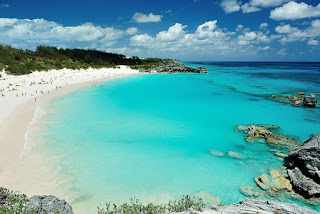Dendrological parks
sergiy
December 18, 2016
Dendrological parks of Ukraine — the zone of cultivation of various plant species, often rare and exotic. Next for creating beautiful ornamental structures, sculptures, artificial lakes, sometimes even simulates the masterpieces of world architecture.
So we brought such parks have been decades or centuries of hard work. And most importantly — put in a great love of nature and artistic enthusiasm of the gardeners, foresters, sculptors...
In our country there are many arboreta. Some of them have a history of 200 years and belong to the oldest in Europe — founded in the last decade and only supplemented and developed. And most of them require more attention than they have now. Rehabilitation, reconstruction, or just a caring attitude of people waiting for dozens of protected parks, the beauty of which is often so stupid exploited us.
Sofiyivka
The city of Uman, Cherkasy region. Area — 179,2 hectares.
This is really the greatest parks of our country and one of the most beautiful in the world. He was named after the wife of Stanislaw Potocki Sofia. Now in his honor called the space asteroid, and even dedicated a poem (Polish writer S. trembecki was).
Once here, you will visit like in ancient Greece or Rome. The Park is very beautiful and rich: there are fountains, ponds and waterfalls, and lake, and the rocks and statues of Roman gods.
A monument of landscape gardening art of the end XVIII — first half XIX centuries is of global significance. This is confirmed by numerous medals, diplomas and awards.
Mainly decorated with antique sculptures. On the whole, the composition of the Park was conceived by author-architect as live replay of the described constructions and other elements from parts of the "Iliad" and "Odyssey" of Homer.
The main gate is built like the entrance to the Athenian market, and the details that complete the watchtower, taken from the temple of the goddess Vesta in Italy. Towers that adorn the main entrance is preserved to our time since the mid-nineteenth century.
So we brought such parks have been decades or centuries of hard work. And most importantly — put in a great love of nature and artistic enthusiasm of the gardeners, foresters, sculptors...
In our country there are many arboreta. Some of them have a history of 200 years and belong to the oldest in Europe — founded in the last decade and only supplemented and developed. And most of them require more attention than they have now. Rehabilitation, reconstruction, or just a caring attitude of people waiting for dozens of protected parks, the beauty of which is often so stupid exploited us.
Sofiyivka
The city of Uman, Cherkasy region. Area — 179,2 hectares.
This is really the greatest parks of our country and one of the most beautiful in the world. He was named after the wife of Stanislaw Potocki Sofia. Now in his honor called the space asteroid, and even dedicated a poem (Polish writer S. trembecki was).
Once here, you will visit like in ancient Greece or Rome. The Park is very beautiful and rich: there are fountains, ponds and waterfalls, and lake, and the rocks and statues of Roman gods.
A monument of landscape gardening art of the end XVIII — first half XIX centuries is of global significance. This is confirmed by numerous medals, diplomas and awards.
Mainly decorated with antique sculptures. On the whole, the composition of the Park was conceived by author-architect as live replay of the described constructions and other elements from parts of the "Iliad" and "Odyssey" of Homer.
The main gate is built like the entrance to the Athenian market, and the details that complete the watchtower, taken from the temple of the goddess Vesta in Italy. Towers that adorn the main entrance is preserved to our time since the mid-nineteenth century.




